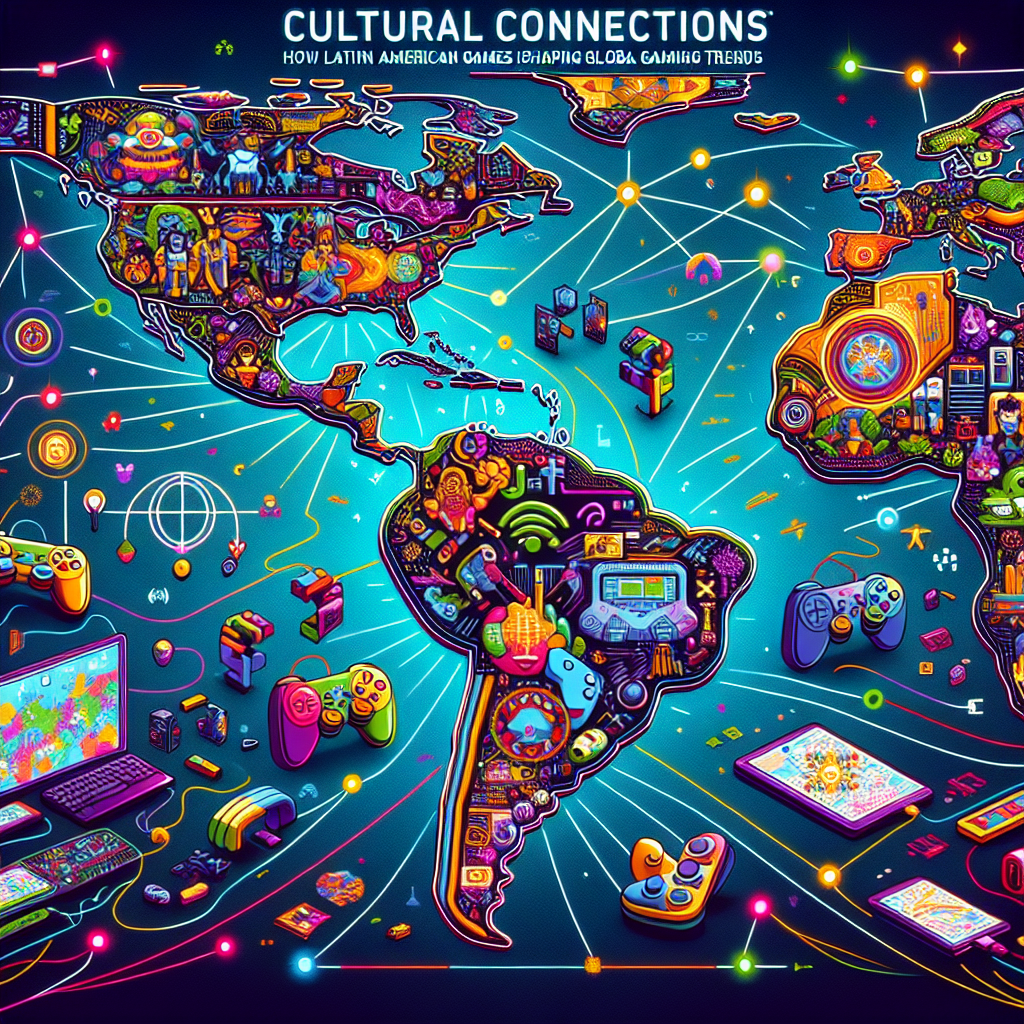Cultural Connections: How Latin American Games are Shaping Global Gaming Trends
The gaming landscape has undergone a seismic shift over the past decade. No longer are gamers confined to a handful of established territories; instead, we’re witnessing a vibrant explosion of creativity and innovation emerging from diverse corners of the globe. One of the regions leading this evolution is Latin America, where a remarkable confluence of culture, technology, and talent is shaping global gaming trends and redefining our understanding of play.
The Rise of Latin American Game Development
Historically, the Latin American gaming industry was undervalued, often overshadowed by more established markets in North America, Europe, and Asia. However, the region has increasingly stepped into the spotlight, with developers gaining recognition for their unique narrative perspectives and artistic styles that blend regional folklore with modern gameplay mechanics. The rise of indie game developers, in particular, has been instrumental in this transition, leveraging local themes and cultural elements to create authentically Latin American experiences.
Embracing Cultural Heritage
Latin American game developers expertly weave traditional folklore, mythology, and social issues into their narratives. Games like Guacamelee! and Spiritfarer turn popular cultural elements into engaging gameplay mechanics, allowing players to explore rich and varied worlds infused with vibrant colors and sounds that reflect the region’s heritage. This approach not only celebrates local cultures but also introduces global audiences to the intricate storytelling traditions of Latin America.
One standout example is The Last Faith, a Metroidvania game inspired by Gothic horror, which incorporates elements of Latin American folklore, including motifs drawn from Indigenous culture alongside Shakespearean undertones. By bridging these cultural divides, Latin American games offer a refreshing change of pace that broadens the horizons of the global gaming community.
Innovative Gameplay Mechanics
The creativity seen in Latin American games extends beyond narrative; many developers are also pushing the boundaries of gameplay mechanics. Titles such as Mulaka and Chileno integrate traditional music, dance, and rhythm into the gaming experience, creating unique gameplay styles that emphasize movement and interactivity in new ways. These innovations encourage players to engage physically and mentally, as they often require an understanding of cultural nuances and local customs to progress.
Moreover, as technology continues to evolve, many Latin American developers are utilizing cutting-edge tools like augmented reality (AR) to enhance spatial storytelling. These immersive experiences draw players directly into the narratives, allowing them to interact with environments peppered with cultural signifiers that reflect the region’s diversity.
Community and Collaboration
One of the standout features of the Latin American gaming scene is its strong sense of community and collaboration. Independent developers often unite under collective banners, sharing resources, knowledge, and support in a way that fosters innovation and creativity. Initiatives such as game jams, where programmers, designers, and artists collaborate to create games within a short time frame, have become increasingly popular.
Furthermore, a rise in technology hubs, incubators, and gaming festivals—such as the Latin American Gamers conference—has bolstered networking and collaboration among developers from various countries. These events have paved the way for greater visibility, letting international players discover the talent and creativity blossoming in the region.
Global Impact and Future Trends
As Latin American games garner more attention and success on the international stage, we’re beginning to witness shifts in global gaming trends. The globalization of gaming is leading to a merging of styles, with Latin American design philosophies influencing mainstream games. The commercial success of titles that highlight regional identities is proving to the gaming world that there is a thirst for diverse narratives and experiences.
Moreover, the rise of local industries serves as a reminder that cultural connections can enhance the gaming experience. As more developers from Latin America gain recognition, they set a precedent for future creators worldwide: authenticity matters. The success of these games encourages developers to draw from their own backgrounds and experiences, enriching the gaming tapestry with authentic narratives.
Conclusion
Latin American games are more than mere entertainment; they are cultural artifacts that reflect the region’s history, struggles, and triumphs. By embracing their heritage and innovating on gameplay, these developers are not only shaping local gaming trends but also influencing global gaming culture. As the world continues to embrace diversity in storytelling, Latin America stands at the forefront, leading the charge toward a more inclusive and colorful future for gamers everywhere. The connections established through these games will resonate far beyond the screen, inspiring a new generation of players and creators globally.




